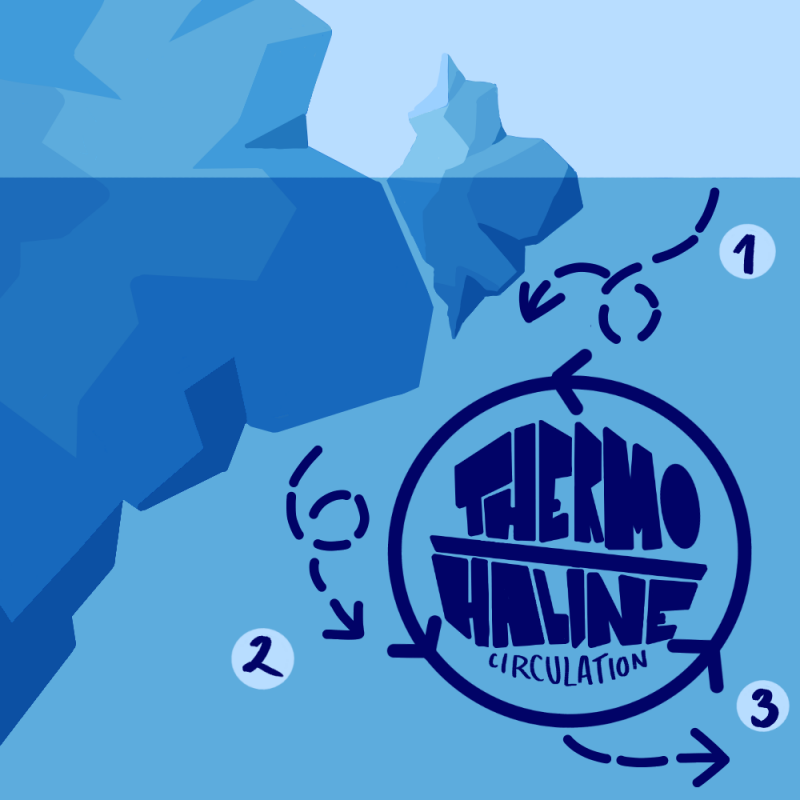Thermohaline Circulation
For something seldom mentioned, thermohaline circulation is massively important in climate regulation. Thermohaline circulation is a process that naturally occurs in the ocean due to fluxes in temperature and salinity, or salt level.
- The cycle starts at the poles where ice freezes.
- Ocean water is salty, but frozen ice is only fresh water. When the water freezes, it leaves behind its salt in the ocean. As a result, liquid water near the poles is saltier. This salty water is denser, so it sinks to the bottom.
- The sinking of surface water forces the deep-ocean water to move horizontally.
Later, it rises to the surface in a warmer region near the equator.
Much like other natural processes, thermohaline circulation is affected by climate change. The melting of ice caps and glaciers is increasing freshwater which decreases ocean salinity, according to the National Oceanic and Atmospheric Administration. As a result, the sinking motion that drives the deep sea current is reduced. Because thermohaline circulation is important to the regulation of surface temperatures, climate change could force drastic temperature changes worldwide.

